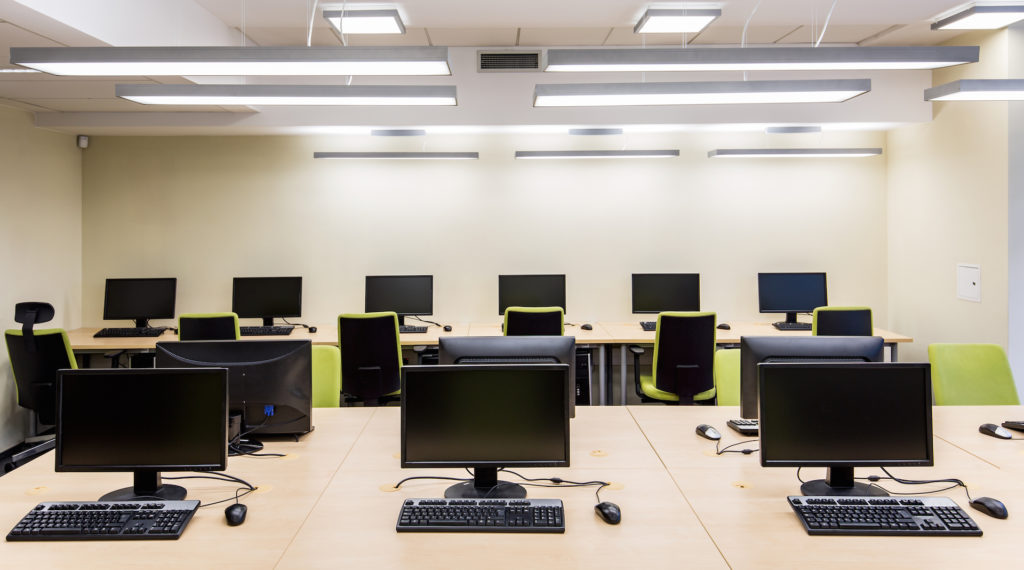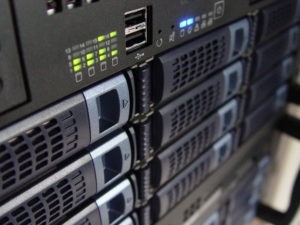Technology plays a major role in twenty-first century education. The new model of integrating technology into the curriculum means that computers are on demand throughout the school day. Technology teachers and administrators face the task of developing a technology plan that makes the most effective and efficient use of the computer hardware available to them. Whether using desktops or laptops, Macs or PCs, the computer lab remains the center for most computing activity in schools.
Types
- The traditional one-room computer lab has morphed into three common types of computer labs: the classical lab with desktop computers, the mobile laptop lab that moves from classroom to classroom, and the mini-lab located in an individual classroom for a teacher to use in her daily work without having to leave her classroom . In addition to these three basic types, some schools and districts, like the Irving Independent District in Irving, Texas, are moving to a 1-to-1 laptop program where all students have their own laptop. This effectively makes every classroom a computer lab.
Function
- The computer lab serves as the center for teaching computer use to whole classes, usually by a specialist computer teacher. Classroom teachers also use the lab with their classes for research, or for creating technology-based projects. Technology specialists use the computer lab for teacher in-services where they instruct teachers on various aspects of using computers in educational settings. The traditional computer lab often serves as the location for networked printers and scanners that are used by the whole school.
Features
- A computer lab comes in several configurations: the most common are the “U” shape and the square models. The “U” or square configurations allow the teacher to monitor student activity. Several large tables in the center of the room provide space for offline work. Projectors, smart boards, scanners, printers, software and a variety of peripherals like digital cameras and camcorders are usually stored in computer labs.

Size
- The number of computers in a lab vary from a few computers in the case of a mini-lab to as many as thirty plus computers in a traditional lab. A mobile lab usually resides on carts that have power management systems so that the laptops can be charged when they are not in use throughout the day. Cart configurations vary with up to twenty laptops in one cart, although ten laptop carts are easier to move from classroom to classroom.
Considerations
- When designing a computer lab, three key issues must be carefully considered. The computer teacher needs to decide whether to utilize wall space for whiteboards or bulletin boards. Whiteboards are effective in instructional activities, while bulletin boards provide space for displaying student work. Scheduling is an issue that requires creative planning. The computer teacher or technology coordinator can place a sign up calendar on the front door of the lab so that teachers can reserve free lab time for their classes. A mobile lab has similar a scheduling problem that can be solved the same way. Monitoring student computer use is the third issue. Computer lab management software allows the computer teacher to control all computers in the lab from a single workstation. This is vital for keeping students on-task during whole class instruction.



